The ‘airstrip’ on Namibia’s highest mountain attracted even more attention in 1979. This time, thankfully, it wasn’t the injured who had to be rescued, but a Piper Cherokee that didn’t have sufficient power to take off in soft sand.
Airstrips in unusual places attract adventurers and explorers, and the small airstrip on Brandberg that had been built by Jan Botha in 1964 was no exception. Although Jan and his son had been badly injured when Jan’s Piper crashed into the rocks when landing in strong wind, the makeshift airstrip still appealed to those with intrepid spirits – and, of course, wings.
I pieced together the next episode in the saga from the account written by Manfred Schlorf, from old newspaper articles found in the archives and from my meeting with one of the protagonists of the story, pilot Martin Bertens.
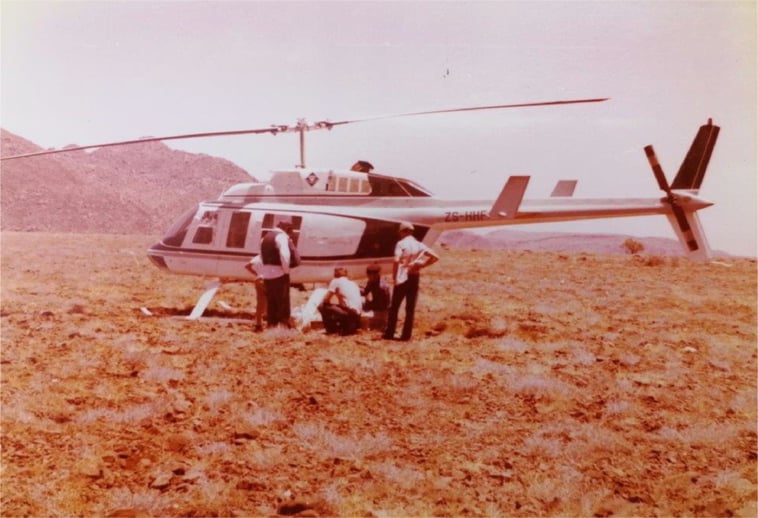
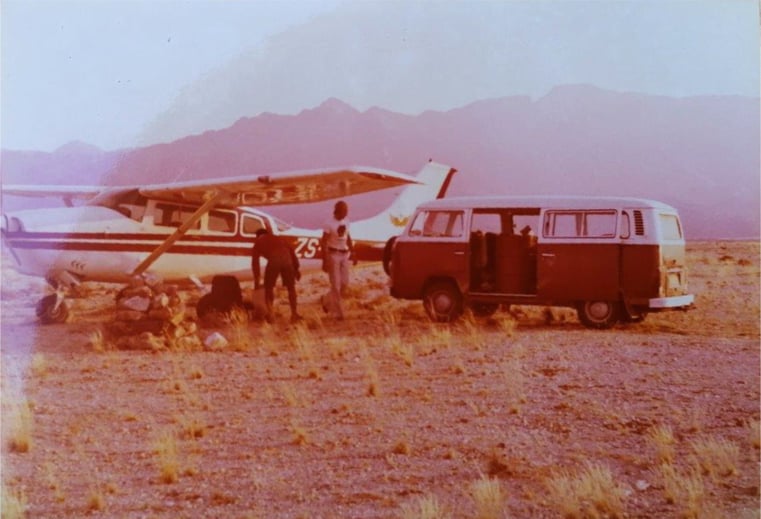

The first flight to the Brandberg airstrip after the harrowing events of the 60s was courtesy of George Christodoulou, known for his dubious dealings in a Skeleton Coast diamond mining venture that drew celebrities like Alice Cooper, Margaux Hemingway, Johnny Carson and Elvis Presley to invest and ultimately lose large sums of money. On this day, however, the purpose was sightseeing and leisure. Christodoulou invited three members from the Namib Aero Club in Swakopmund – Hans Kriess, Martin Bertens and Gerd Behrens – to accompany him in his helicopter to find Jan Botha’s airstrip on the top of Brandberg Mountain. They eagerly joined him for the adventure, finding the airstrip and the remains of Jan’s plane.
Inspired after the flight, the three young men entertained the idea of flying the club’s leased Piper Cherokee PA28 to the airstrip and taking photos of some of Brandberg’s renowned rock paintings. For several months before the trip, they made calculations on how to land and take off from the airstrip, which is more than 2500 metres above sea level, until they felt confident that they could manage both safely in the light aircraft. In January 1979, they set off, Behrens and Bertens (the flight instructor at the Aero Club) flying the Piper to Brandberg, while Kriess drove the backup vehicle with the necessary camping gear and supplies. They met up and camped overnight at the base of the mountain.
It was a crystal-clear morning when Bertens and Behrens took off for the airstrip the next day and they landed easily and well. What they didn’t take into account was that the recent rainfall had softened the sand on the airstrip. When it was time to leave, the men turned the plane around and using all their strength pushed it to the beginning of the airstrip for take-off. With the plane in full throttle, they could only accelerate to 35 knots and were not able to reach the 50-knot speed required for take-off. They tried again, turning the plane around and pushing it to the start, trying to pick up enough speed to take off. Exhausted after the third attempt, they knew it was useless and gave up. As the walkie-talkies they took with didn’t work from that height and over the long distance, they weren’t able to communicate with Kriess to tell him that they were safe.
Back at basecamp, Kriess began to panic when the plane didn’t return in the late afternoon and he couldn’t reach his friends. He drove to Uis and contacted businessman Rolf Gossow in Swakopmund, who, in turn, contacted pilot Jürgen Klein. As it was too late in the day by then for anyone to do anything, they made an arrangement for Klein to fly to Brandberg at first light to search for the plane. While everyone worried about them, Behrens and Bertens made plans to walk down the mountain the following day and went to sleep, one in the stranded plane and one outside.
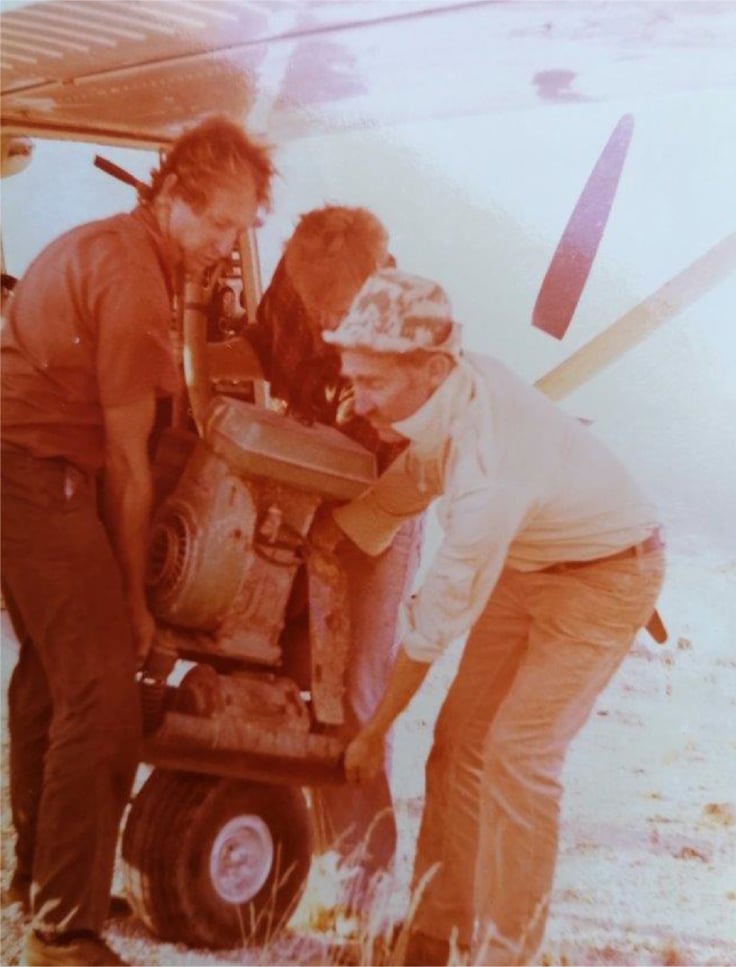
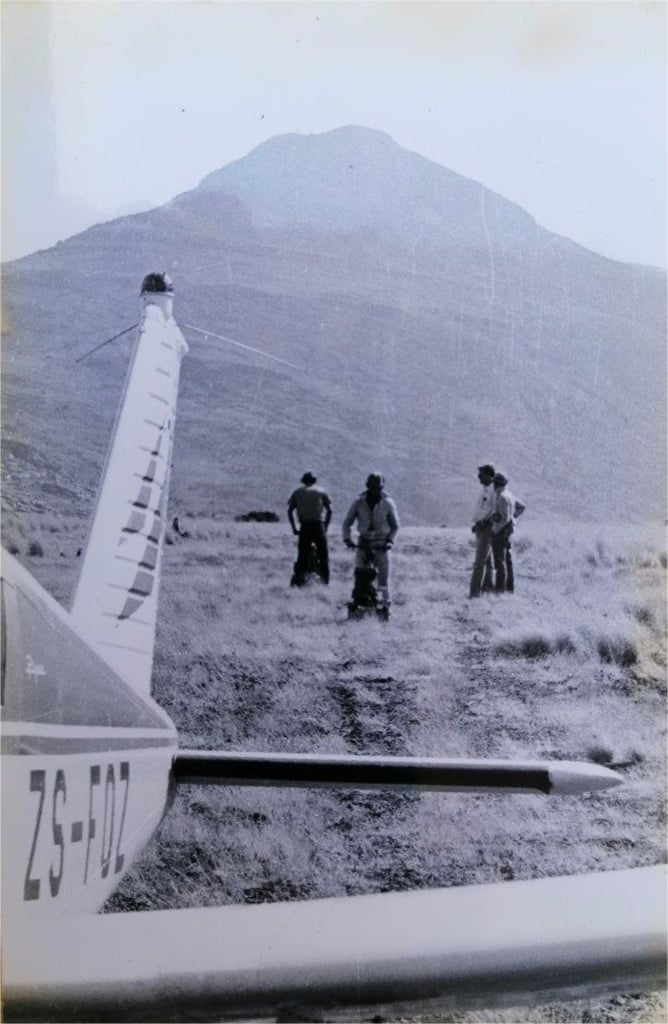
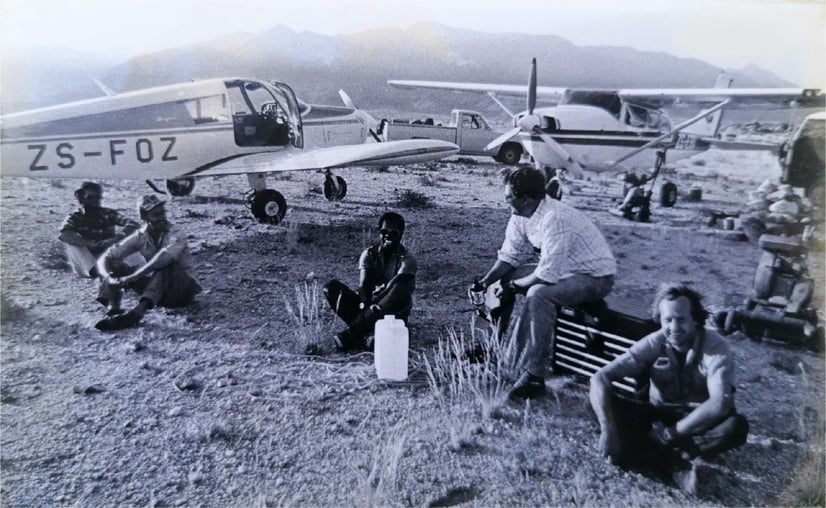
Klein flew over Brandberg early the next morning and spotted the Piper on the airstrip. He was able to communicate with the men by radio. When he ascertained that they were alive and well, he flew off and Behrens and Bertens started their decent down the mountain.
With little water, no food and in the rugged terrain, the hike down the mountain was taxing and took twelve hours. It was well after dark when they arrived exhausted at the mountain’s base to be welcomed by a relieved Kriess, who had made a fire to keep warm and to serve as a beacon in the darkness.
When the trio returned to Swakopmund and to the Aero Club, they weren’t popular. There were many accusations from fellow members as to the rationale of them flying the club’s leased plane to the top of Brandberg, where it now stood abandoned. Eventually the three men put heads together and decided to provide a solution and end the discord. They approached the company that owned the plane and asked if they could buy it. Amused, the owner listened to their story and agreed to sell it to them for R4500, a sum which they split among themselves, becoming co-owners.
The Piper remained on the top of Brandberg for three months while the men worked out how to cover all bases and get it off the mountain without a hitch. They enlisted pilot Noel Walsh and his powerful turbo Cessna 206. Walsh flew to the base of Brandberg where he met up with the rest of the team who travelled from Swakopmund in back-up vehicles, carrying food, bigger wheels for the Piper and a compactor to compact the sand on the airstrip. Among the group were mechanic Willie Cochrane and Dr Hoffie Viljoen. The group camped at the base of the mountain, preparing for the rescue operation.
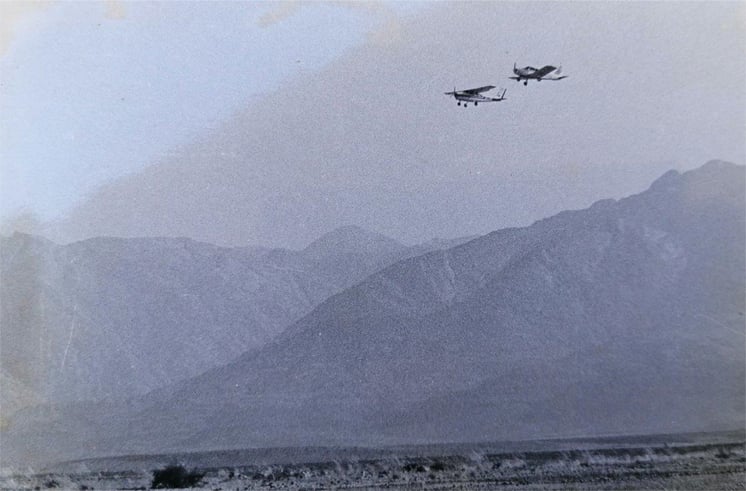
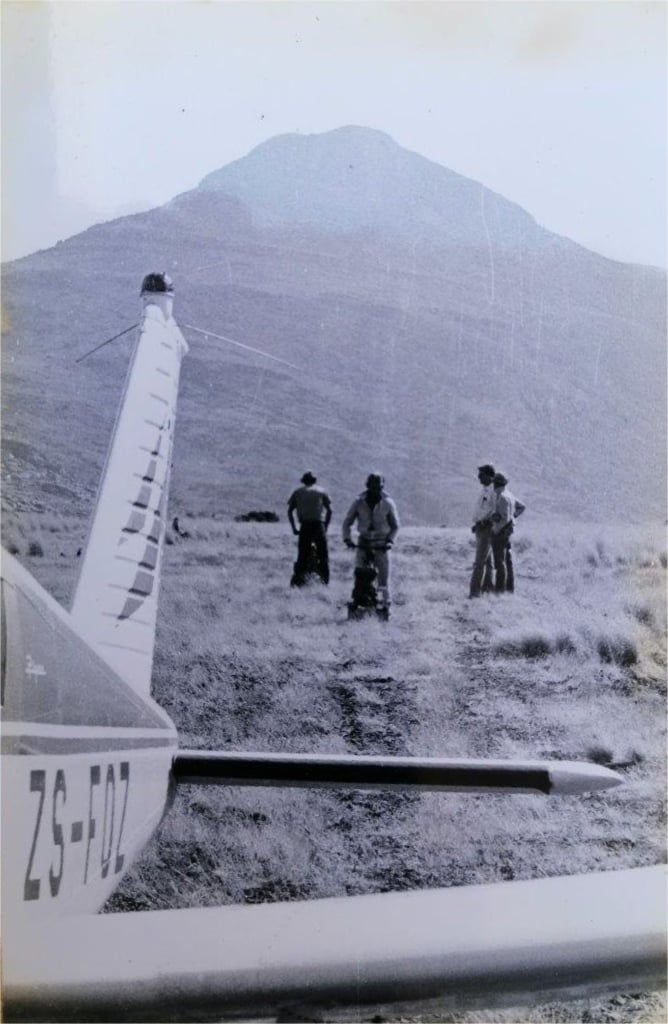
The next morning Walsh flew up to the airstrip with Bertens and the mechanic on board. They carried the compactor with them and the new wheels. Walsh’s first attempt to land wasn’t successful when he misjudged the beginning of the airstrip and at the last moment pulled the Cessna up into the air averting a near disaster. He made a good landing on his second attempt and after dropping off his two passengers flew off to collect a second compactor, a compactor operator and Kriess from the base of the mountain.
Work was soon underway on the airstrip as the mechanic checked the Piper and swapped the wheels, and the compactors hardened the runway for take-off. After a few hours, the airstrip was completed and the Piper, with Bertens at the controls, was ready to leave. Everybody held their breath. The small plane started up, picked up speed on the runway and, to everyone’s relief, lifted off into the sky.
Once Walsh had flown the equipment and crew from the top of the mountain, the successful rescue mission was complete and everyone happily returned to Swakopmund.
I met up with Bertens, forty years after the event, and heard the story recounted first hand. He told me how he eventually bought the other men’s shares in the plane, becoming the sole owner, and started his own flight club at Arandis on the outskirts of Swakopmund. Looking back, he acknowledged that he had been part of an adventure that took a lot of youthful courage and vigour, and he was grateful that he had lived to tell the tale.
Today, it is no longer permissible to land on dirt roads – or on the Brandberg Mountain airstrip – and the stories of the time are remembered for the daring and bravado of those involved, and the ensuing and exciting rescue attempts that took place on Namibia’s highest mountain.
(References: Manfred Schlorf, Die Landung dem Brandberg;
Drama on the Brandberg, Namib Times, 2 February 1979)




.png)
.jpg)
.jpg)


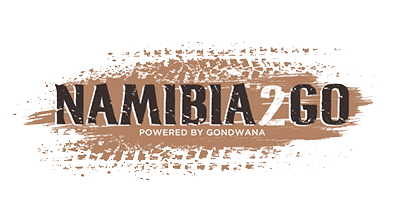

.png)

SUBMIT YOUR COMMENT